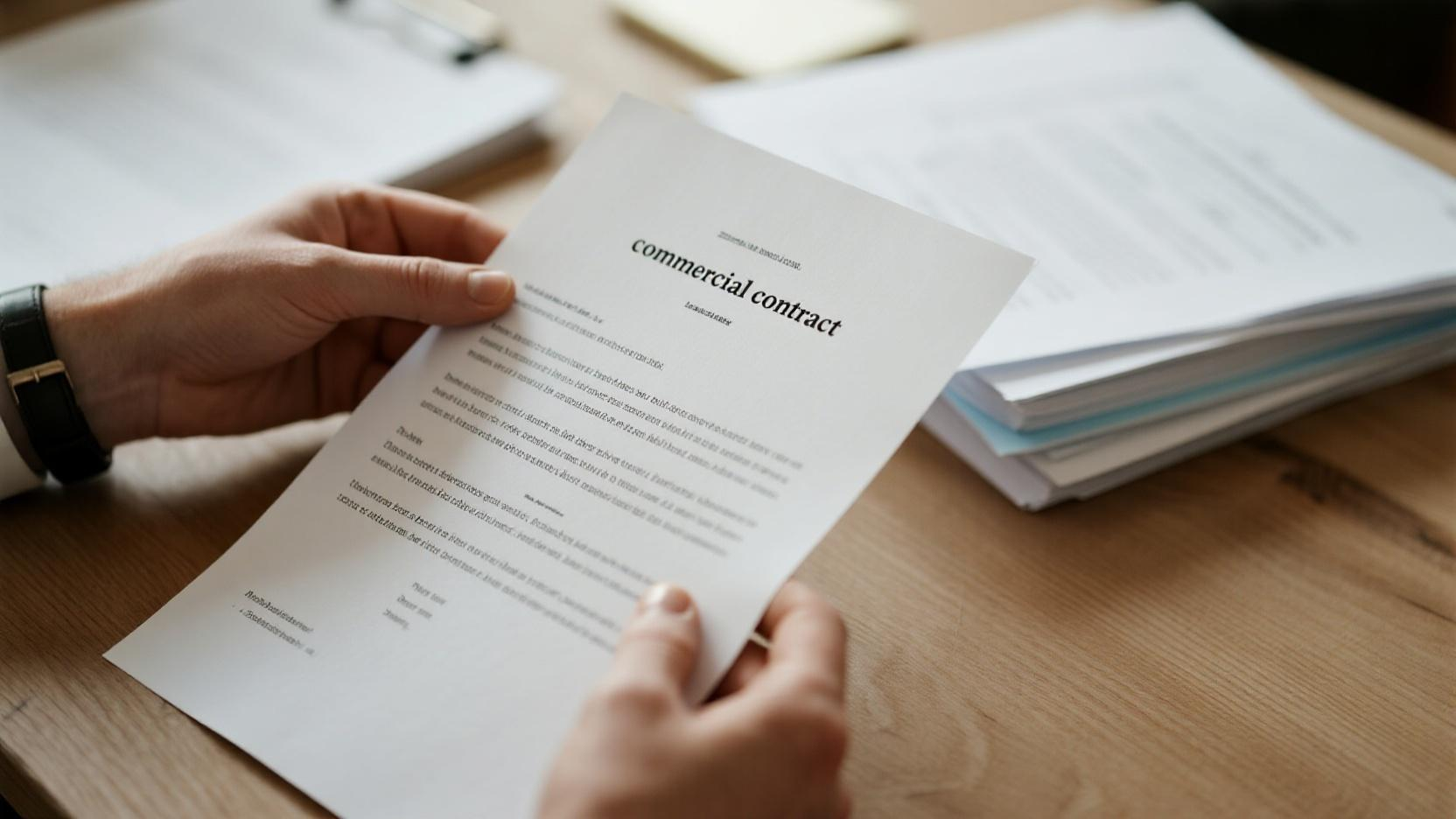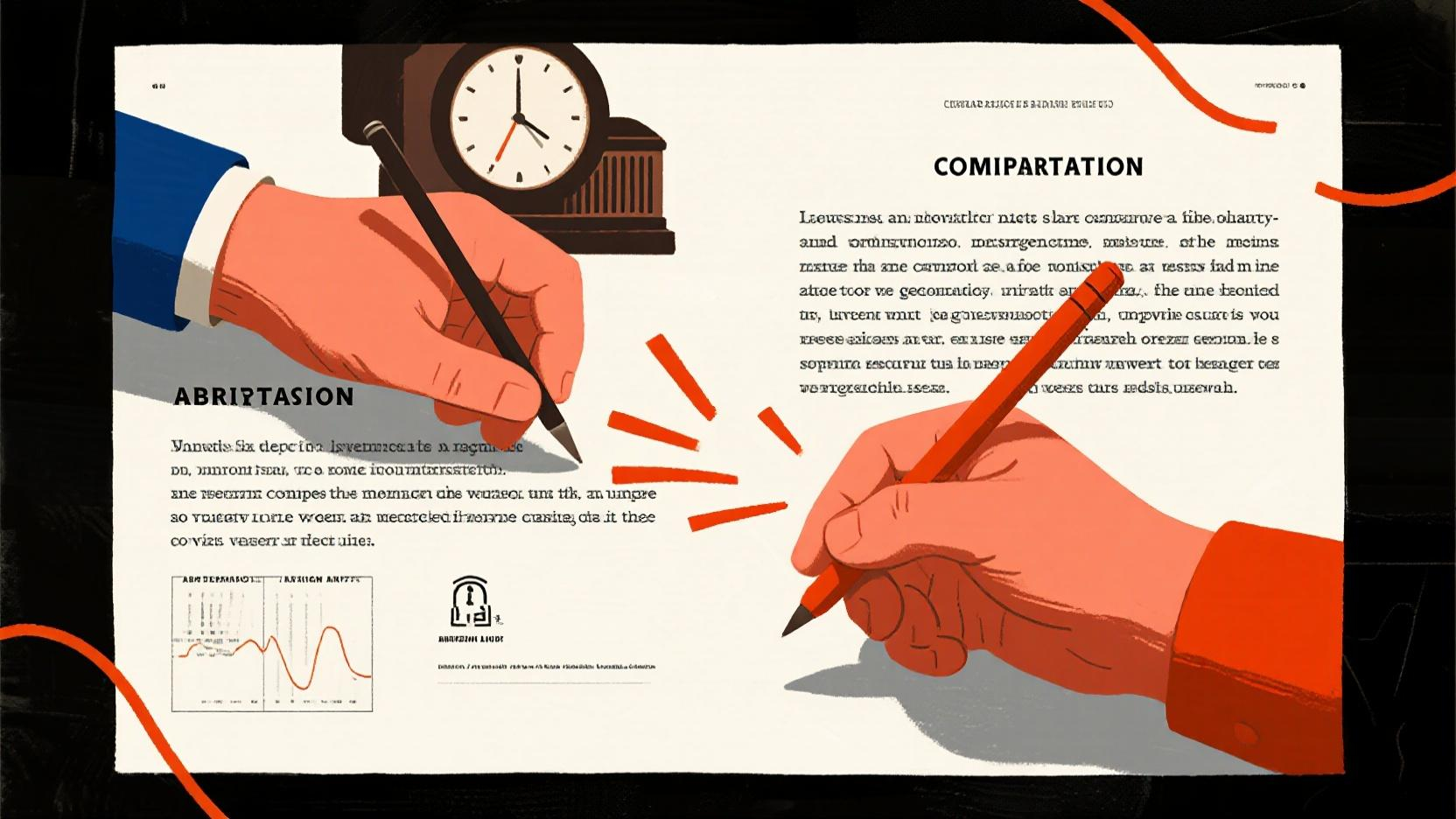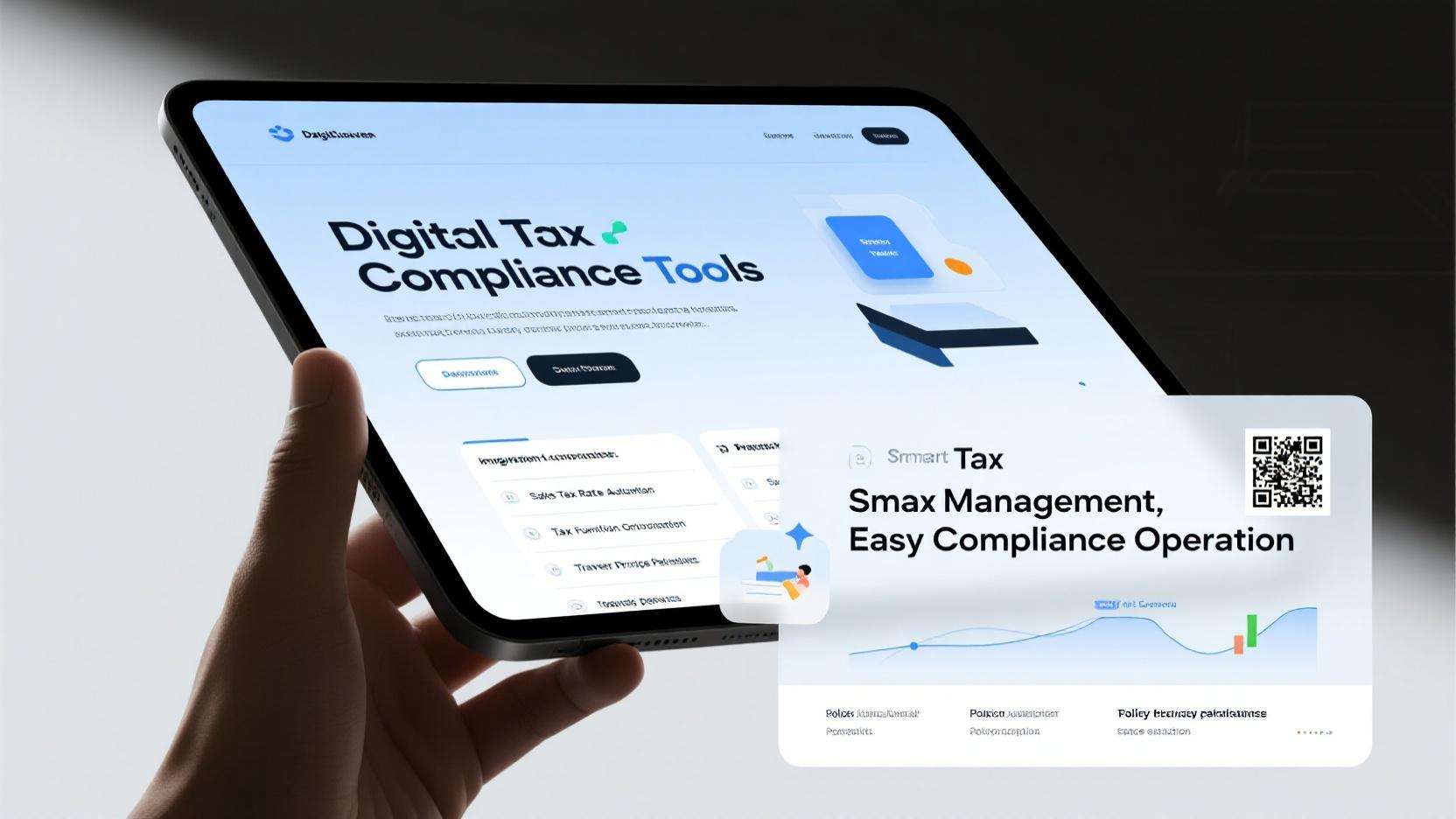Image Source: pexels
Dispute resolution mechanisms play a critical role in protecting business interests. They provide structured methods to address disagreements, ensuring smoother operations and stronger partnerships. Without these mechanisms, conflicts can escalate, leading to financial losses and strained relationships.
"Alternative dispute resolution, a set of practices and techniques aimed at permitting the resolution of legal disputes outside the courts, can reduce transaction costs, since it is cheaper and faster than ordinary judicial proceedings."
These mechanisms also create solutions tailored to the needs of the parties involved. This approach fosters compliance and minimizes disruptions. A detailed explanation of dispute resolution mechanisms in business contracts helps businesses prepare for potential challenges and safeguard their legal and financial stability.
Key Takeaways
- Dispute resolution methods help businesses solve problems without big lawsuits.
- Adding clear dispute rules in contracts shows how to fix issues.
- Talking things out first can save time and keep peace.
-
Mediation and arbitration are quicker and cheaper than court cases.

- Mediation helps both sides work together.
- Arbitration gives final decisions everyone must follow.
- Lawyers can help write contracts that fit business needs and laws.
What Are Dispute Resolution Mechanisms in Business Contracts?
Definition and Purpose
Dispute resolution mechanisms in business contracts refer to structured processes designed to address disagreements between parties. These mechanisms aim to resolve conflicts efficiently while minimizing disruptions to business operations. They often include steps such as reviewing contract terms, identifying the cause of the dispute, and consulting legal professionals. By providing a clear framework, these mechanisms help businesses avoid unnecessary delays and financial losses.
Why They Are Essential in Business Contracts
Dispute resolution mechanisms are essential because they protect businesses from prolonged conflicts. Without them, disagreements can escalate, leading to costly litigation or damaged relationships. These mechanisms also ensure that disputes are handled in a fair and predictable manner. For example, a well-defined process might involve negotiation, mediation, or arbitration before resorting to litigation. This approach allows businesses to adapt the resolution procedure to the specific nature of the conflict, ensuring a tailored solution.
The Role of a Dispute Resolution Clause
A dispute resolution clause is a critical component of any business contract. It outlines the agreed-upon method for resolving disputes, providing clarity and reducing uncertainty. Common examples include tiered clauses, which escalate disputes through negotiation, mediation, and arbitration, and jurisdiction clauses, which specify the court or legal body that will handle the case. These clauses not only streamline the resolution process but also help maintain professional relationships by fostering cooperation. Businesses should carefully draft these clauses to align with their operational needs and legal requirements.
Tip: Including a dispute resolution clause in contracts can save time and money by avoiding unnecessary legal battles.
Common Types of Disputes in Business Contracts
Breach of Contract
A breach of contract occurs when one party fails to fulfill their obligations as outlined in the agreement. This type of dispute is one of the most common in business relationships. Breaches can be classified as material or minor. A material breach significantly impacts the contract’s purpose, while a minor breach involves less critical issues. For example, a supplier failing to deliver goods on time could lead to a material breach if the delay disrupts the buyer’s operations. Businesses often address these disputes by reviewing the contract terms and seeking remedies such as compensation or specific performance.
Note: Including clear performance expectations in contracts can help reduce the likelihood of breaches.
Payment Disputes
Payment disputes arise when one party disagrees with the amount owed or refuses to pay altogether. These conflicts often occur in industries where services are delivered before payment, such as construction or consulting. For instance, a contractor might claim they completed the work as agreed, but the client disputes the quality or scope of the services. Payment disputes can strain business relationships and disrupt cash flow. To resolve these issues, parties may rely on invoices, receipts, and other documentation to support their claims. Mediation or arbitration can also provide a neutral platform for resolving disagreements.
Intellectual Property Disputes
Intellectual property (IP) disputes involve disagreements over the ownership or use of trademarks, copyrights, patents, or trade secrets. These disputes can arise when one party uses another’s intellectual property without permission or when the rights to an invention or design are unclear. Notable examples include:
- A tattoo designed by S. Victor Whitmill was replicated in the movie The Hangover Part II without permission, leading to a copyright dispute.
- Adidas sued Payless Shoes for trademark infringement after Payless used similar stripe designs on sneakers, resulting in a $305 million damages award.
- The U.S. Supreme Court ruled that "shredded wheat" could not be trademarked, highlighting disputes over trademark rights after patents expire.
These cases demonstrate the importance of protecting intellectual property through clear agreements and legal safeguards. Businesses should consult legal experts to ensure their IP rights are well-defined and enforceable.
Partnership or Joint Venture Disputes
Partnership or joint venture disputes often arise when parties disagree on their roles, responsibilities, or profit-sharing arrangements. These disputes can disrupt operations and damage long-term business relationships. Common causes include unclear agreements, mismanagement of resources, or failure to meet obligations. For example, one partner might feel another is not contributing equally to the venture, leading to tension and mistrust.
To address these disputes, businesses should first review the partnership or joint venture agreement. This document typically outlines each party’s duties, financial contributions, and decision-making authority. If the agreement lacks clarity, negotiation can help resolve misunderstandings. Mediation offers another option, allowing a neutral third party to facilitate discussions and propose solutions. Arbitration or litigation may become necessary if the conflict escalates.
Preventing these disputes starts with drafting comprehensive agreements. Clear terms regarding profit distribution, dispute resolution methods, and exit strategies can reduce the likelihood of conflicts. Regular communication and periodic reviews of the partnership’s progress also help maintain transparency and trust.
Tip: Businesses should consult legal professionals when forming partnerships to ensure agreements are thorough and enforceable.
Employment or Labor Disputes
Employment or labor disputes occur when disagreements arise between employers and employees over workplace issues. These disputes can harm morale, productivity, and a company’s reputation. Common types include:
- Wrongful Termination: Employees may challenge their dismissal, claiming it was unjustified.
- Wage Disputes: These involve disagreements over pay, including overtime or employee misclassification.
- Claims of Harassment or Discrimination: Employees may allege unfair treatment based on race, gender, age, or other characteristics.
- Severance Agreements: Disputes may arise over the terms of severance packages.
Resolving these disputes often begins with reviewing employment contracts and company policies. Employers should document all workplace interactions and decisions to provide evidence if needed. Mediation can help both parties reach a fair resolution without escalating the conflict. In severe cases, arbitration or litigation may be required.
To minimize these disputes, businesses should establish clear policies and provide regular training on workplace rights and responsibilities. Open communication channels also encourage employees to voice concerns before they escalate.
Note: Maintaining detailed records of employment decisions can protect businesses during disputes.
Types of Dispute Resolution Mechanisms
Image Source: pexels
Negotiation
Advantages
Negotiation offers a straightforward and cost-effective way to resolve disputes. It allows parties to communicate directly and work toward a mutually acceptable solution. This method avoids the need for third-party involvement, saving time and resources. Negotiation also helps preserve business relationships by fostering open dialogue and collaboration.
When to Use
Negotiation works best when both parties are willing to cooperate and maintain a positive relationship. It is ideal for resolving minor disputes, such as disagreements over contract terms or delivery timelines. Businesses should consider negotiation as the first step in addressing conflicts before exploring other mechanisms.
Mediation
Advantages
Mediation provides a structured yet flexible approach to resolving disputes. It encourages cooperation and focuses on finding solutions that benefit all parties. Key benefits include:
- A collaborative environment that helps maintain or improve business relationships.
- Confidentiality, which protects sensitive business information.
- Cost-effectiveness, as mediation typically incurs lower legal fees and shorter timelines compared to litigation.
- Faster resolution, often within weeks or months.
- Customizable solutions tailored to the specific needs of the parties involved.
Disadvantages
Mediation relies heavily on the willingness of both parties to engage in dialogue. If one party refuses to cooperate, the process may fail. Additionally, mediation does not guarantee a binding resolution unless both parties agree to the terms.
When to Use
Mediation is suitable for disputes where preserving the relationship is a priority. It works well for conflicts involving payment disagreements, partnership issues, or employment disputes. Businesses should consider mediation when negotiation fails but before escalating to arbitration or litigation.
Arbitration
Advantages
Arbitration offers a private and efficient way to resolve disputes. It is generally faster than litigation, with cases often resolved in about seven months compared to the 23 to 30 months typical of court proceedings. Other advantages include:
- Simplified rules of evidence and procedure, making the process less complex.
- Confidentiality, which protects trade secrets and sensitive information.
- The ability to choose an arbitrator, ensuring impartiality.
- Lower costs due to reduced attorney fees and preparation expenses.
- Finality, as arbitration decisions are binding with limited opportunities for appeal.
Disadvantages
Arbitration can limit the ability to appeal decisions, which may disadvantage a party dissatisfied with the outcome. Additionally, arbitration fees can be significant, especially when using experienced arbitrators.
When to Use
Arbitration is ideal for disputes requiring a binding resolution without the delays of litigation. It is particularly effective for complex commercial disputes, intellectual property conflicts, or cases involving international parties. Businesses should include arbitration clauses in contracts to streamline the resolution process.
Litigation
Advantages
Litigation provides a formal and structured process for resolving disputes. Courts follow established legal procedures, ensuring fairness and transparency. One key advantage is the ability to enforce court decisions, as they carry legal authority. This makes litigation a reliable option for resolving disputes where compliance is critical.
Litigation also allows parties to present evidence and arguments in a public forum. This transparency can deter unethical behavior and ensure accountability. Additionally, courts can handle complex cases involving multiple parties or intricate legal issues. Judges and juries bring impartiality to the process, which helps ensure a fair outcome.
Tip: Businesses should document all interactions and agreements thoroughly. This evidence can strengthen their case during litigation.
Disadvantages
Litigation often involves significant costs and lengthy timelines. Legal fees, court expenses, and the time required to prepare a case can strain resources. Small businesses may find these costs particularly burdensome. The public nature of court proceedings can also expose sensitive business information, potentially harming a company’s reputation.
Another drawback is the adversarial nature of litigation. The process can damage relationships between parties, making future collaboration difficult. Appeals can further prolong the resolution, adding to the uncertainty and expense.
Note: Businesses should weigh the potential costs and risks of litigation before pursuing this option.
When to Use
Litigation is most appropriate for disputes requiring a legally binding resolution. It is often used in cases involving significant financial stakes, fraud, or breaches of fiduciary duty. Businesses may also turn to litigation when other dispute resolution methods, such as mediation or arbitration, fail to produce a satisfactory outcome.
Litigation is ideal for disputes where legal precedent or public accountability is important. For example, intellectual property cases or breaches of contract involving large sums often require court intervention. Businesses should consult legal professionals to determine if litigation is the best course of action.
Reminder: Including a jurisdiction clause in contracts can simplify the litigation process by specifying the court that will handle disputes.
Step-by-Step Guide to Resolving Disputes
Image Source: pexels
Review the Contract
Resolving disputes begins with a thorough review of the contract. This step ensures clarity regarding each party’s obligations and rights. A structured approach helps uncover the root cause of the disagreement and provides a foundation for resolution. Key steps include:
- Examine the terms of the contract. Focus on provisions related to performance, payment, and dispute resolution.
- Identify the cause of the dispute. Pinpoint the specific issue, whether it involves a breach, payment delay, or misinterpretation of terms.
- Gather supporting evidence. Collect invoices, emails, or other relevant documents to substantiate claims.
- Consult legal professionals. Seek advice from a lawyer to understand the implications of the dispute and explore potential remedies.
A systematic review of the contract not only clarifies the situation but also strengthens the position of the party seeking resolution.
Tip: Keeping contracts organized and accessible can save time during disputes.
Identify the Nature of the Dispute
Understanding the nature of the dispute is crucial for selecting the most effective resolution strategy. Businesses can employ several practices to identify the underlying issue:
- Encourage open communication. Transparent discussions help uncover misunderstandings and build trust.
- Regularly review agreements. Periodic checks of contracts and policies can highlight potential areas of conflict before they escalate.
- Analyze business dynamics. Consider the unique needs and operations of the business to tailor dispute resolution approaches.
By identifying the type of dispute—whether it involves payment, intellectual property, or partnership issues—businesses can address the problem with greater precision.
Reminder: Early identification of disputes reduces the risk of prolonged conflict.
Attempt Negotiation
Negotiation serves as the first line of defense in resolving disputes. It allows parties to communicate directly and work toward a mutually beneficial solution. Best practices for effective negotiation include:
- Maintain emotional control. Avoid reacting impulsively to provocations or power plays.
- Focus on collaboration. Seek solutions that create value for both parties rather than treating the dispute as a win-lose scenario.
- Leverage time strategically. Use ongoing communication to shift perceptions and build consensus over time.
Negotiation fosters cooperation and preserves relationships, making it an ideal starting point for resolving minor conflicts.
Note: Documenting negotiation discussions ensures accountability and clarity for both parties.
Consider Mediation or Arbitration
Mediation and arbitration offer structured alternatives to resolve disputes without resorting to litigation. Each method has unique benefits and suits different scenarios. Businesses should carefully evaluate their needs before choosing between these options.
Mediation works well for disputes where preserving relationships is a priority. A neutral mediator facilitates discussions, helping parties reach a mutually acceptable solution. This process encourages collaboration and often results in creative, flexible outcomes. Mediation also saves time and money compared to other methods. However, it requires both parties to cooperate willingly, as the mediator cannot impose a binding decision.
Arbitration, on the other hand, provides a more formal approach. An arbitrator reviews evidence and delivers a binding decision, similar to a court ruling. This method suits complex disputes requiring definitive outcomes. Arbitration ensures confidentiality and typically resolves cases faster than litigation. However, it may involve higher costs, especially when experienced arbitrators are involved.
Key factors to consider when deciding between mediation and arbitration include:
- Nature of the Dispute: Mediation suits relationship-focused conflicts, while arbitration handles complex issues needing finality.
- Desired Outcome: Mediation allows flexibility, whereas arbitration provides a binding resolution.
- Cost and Time Considerations: Mediation is generally quicker and less expensive than arbitration.
By weighing these factors, businesses can select the most effective method for their specific situation.
Escalate to Litigation if Necessary
Litigation becomes necessary when other dispute resolution methods fail or when the stakes are too high for informal processes. This formal approach involves presenting the case in court, where a judge or jury delivers a legally binding decision.
Common scenarios requiring litigation include:
- Contract Breaches: Occur when one party fails to meet contractual obligations.
- Shareholder Disagreements: Arise from conflicting visions among shareholders or directors.
- Intellectual Property Conflicts: Involve disputes over misuse or infringement of IP rights.
- Employment Disagreements: Cover issues like wrongful termination or discrimination.
Litigation offers the advantage of enforceable decisions and a transparent process. Courts follow established legal procedures, ensuring fairness. However, this method often involves significant costs and lengthy timelines. Public proceedings may also expose sensitive business information.
Businesses should consider litigation as a last resort. Before proceeding, they must consult legal professionals to assess the risks and benefits. Proper preparation, including thorough documentation and evidence collection, strengthens their case and increases the likelihood of a favorable outcome.
Tip: Including a jurisdiction clause in contracts simplifies litigation by specifying the court that will handle disputes.
How to Choose the Right Dispute Resolution Mechanism
Key Factors to Consider
Cost
Cost plays a significant role in selecting a dispute resolution mechanism. Litigation, for instance, imposes both direct and indirect costs. Globally, commercial claims resolved through litigation cost approximately $870 billion annually. Indirect costs, such as wasted management time and strained business relationships, further increase the financial burden. Mediation and arbitration, on the other hand, offer more cost-effective alternatives. Businesses should evaluate their budget and the potential financial impact of each mechanism before making a decision.
Time
Time is another critical factor. Litigation often takes years to resolve, which can delay business operations and increase uncertainty. Arbitration provides a faster alternative, typically resolving disputes within months. Mediation offers an even quicker solution, often concluding in weeks. Businesses should consider the urgency of the dispute and the time required for resolution when choosing a mechanism.
Nature of the Dispute
The complexity and urgency of the dispute influence the choice of resolution method. Mediation suits disputes where preserving relationships is essential, such as partnership disagreements. Arbitration works well for complex issues requiring a binding decision, such as intellectual property conflicts. Litigation is ideal for high-stakes disputes involving fraud or significant financial losses. Understanding the nature of the dispute helps businesses select the most appropriate mechanism.
Tip: Consider the enforceability and finality of the resolution. Arbitration and litigation provide binding outcomes, while mediation relies on mutual agreement.
Tailoring the Mechanism to Business Needs
Tailoring dispute resolution mechanisms to specific business needs ensures effective outcomes. For example, arbitration allows for detailed examination of technical issues, which may be overlooked in court. Confidentiality provisions in arbitration and mediation protect sensitive business information, such as proprietary technology. These mechanisms also foster cooperation, helping businesses maintain relationships critical to ongoing operations. Professional services like mediation and arbitration provide neutral platforms for resolving conflicts efficiently and cost-effectively.
Importance of Legal Advice
Legal advice is essential when choosing a dispute resolution mechanism. Lawyers help businesses draft effective dispute resolution clauses, addressing key considerations such as jurisdiction and arbitration rules. They also ensure that the chosen mechanism aligns with the business’s operational needs and legal requirements. Consulting legal professionals minimizes risks and enhances the likelihood of a favorable outcome.
Reminder: A well-drafted dispute resolution clause simplifies the resolution process and reduces uncertainty.
Understanding dispute resolution mechanisms equips businesses with tools to manage conflicts effectively. These mechanisms minimize disruptions, preserve relationships, and reduce costs through structured approaches like mediation or arbitration. A well-drafted dispute resolution clause further enhances this process by providing clarity and preventing costly surprises. For instance, structured clauses ensure faster and more flexible resolutions, avoiding the pitfalls of poor drafting, such as confusion or bureaucracy. Businesses should consult legal professionals to tailor these clauses to their needs. Seeking expert advice ensures contracts align with operational goals and legal standards, fostering long-term efficiency and collaboration.
FAQ
What is the purpose of a dispute resolution clause in a contract?
A dispute resolution clause outlines how parties will handle disagreements. It provides a clear process, such as negotiation or arbitration, to resolve conflicts efficiently. This clause reduces uncertainty and helps avoid costly legal battles.
Can businesses modify dispute resolution clauses after signing a contract?
Yes, businesses can modify these clauses if all parties agree. They must document the changes in writing and ensure compliance with applicable laws. Consulting legal professionals ensures the modifications are enforceable.
Is mediation legally binding?
Mediation is not legally binding unless both parties agree to the terms and sign a settlement agreement. This flexibility allows parties to explore solutions without committing to a final decision.
How does arbitration differ from litigation?
Arbitration is a private process where an arbitrator delivers a binding decision. Litigation occurs in court and follows formal legal procedures. Arbitration is faster and more confidential, while litigation provides public accountability.
Why is legal advice important when drafting dispute resolution clauses?
Legal advice ensures dispute resolution clauses align with business needs and legal standards. Lawyers help identify potential risks, select appropriate mechanisms, and draft enforceable terms. This preparation minimizes future conflicts.












